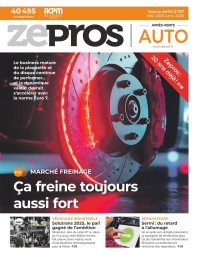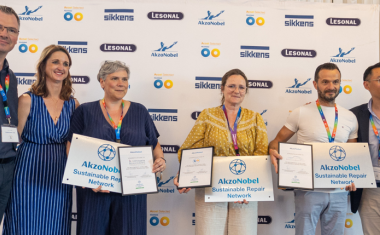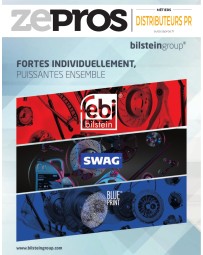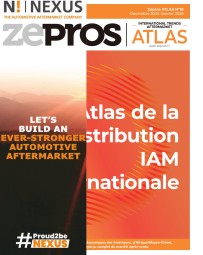
Collision repair: a market undergoing global transformation

Despite economic and environmental pressures that drive constant cost savings for products, the bodywork-paint market has a bright future ahead.
According to figures from specialised media Coatings World, the automotive paint products market is projected to reach $17.79 billion by 2032. North America is poised to retain its global dominance, driven by its high vehicle ownership rates and substantial investments in technology by the world’s leading manufacturers. Notably, three of the six global leaders in this industry hail from the United States. However, the accident repair sector is now experiencing significant convergence worldwide. The main reason is that the vehicle parc continues to expand all over the world.
According to figures from the information services company IHS Markit, cited by the research firm GiPA during the IBIS Global Summit in Rhodes last May, the number of “Vehicles in operation” (VIO) is projected to rise from 1.36 billion in 2019 to 1.64 billion by 2030. Most of this growth is driven by Asia-Pacific, whose parc will have increased by 3.1% during this period, ahead of the Middle East & Africa region with an increase of 1.4%. That is almost double that of North America, South America and Europe, all three increasing by 0.8%. A global parc that is expanding but also aging. Even in China, where the average age of vehicles was only 4.2 years in 2019, it should be 6.8 years in 2026. Given the specialisation of national manufacturers in this type of powertrain, China’s car market is predominantly electric.
The desirability of electric vehicles
A larger parc means a potentially more accident-prone fleet. And with electrification underway in certain markets – the Far East and Western Europe in particular – additional opportunities are being created for bodywork players. Still according to GiPA, which takes the French market as an example, the scratches/accident rate recorded by electric vehicles during 2023 (18%) is slightly higher than the average for the total parc. Forty two percent of these insurance claims were reported to their insurers by vehicle owners, which is six points higher than the French average.
More than 60% of repairs were conducted in manufacturer networks where workshops view the growth in electric cars as a significant opportunity to either revive or expand their bodywork business. Especially when these EVs require much less mechanical work. Therefore, there’s a tendency within the OES industry to establish centralised bodywork shops or acquire other workshops, even though in most of the five major Western European markets, independent workshops are more prevalent than manufacturer-approved workshops.
Market concentration continues
There’s a concentration phenomenon not unlike that which has been at work in distribution for several years. The growth of distributors specialising in paint through external acquisitions has been a significant phenomenon in North America, resulting in the emergence of major players such as Wesco, National Coatings & Supply (NCS) and the consolidation of LKQ's paint business through the acquisition of FinishMaster in 2023. But while European paint distribution is less affected by this phenomenon, bodywork companies are increasingly subject to it. As the ICDP research firm pointed out at the Parts Aftermarket Congress in Rome last November, the number of body shops in the four main Western European markets – Germany, France, the UK and Italy – has fallen considerably in fifteen years. And group membership is growing.
In the United Kingdom, Steer Automotive Group has around 170 sites, FMG Services Repair, 65, and Gemini, 34. In Italy, CarClinic has more than 50 centres. Independent body shops, for their part, tend to join networks formed by distribution groups or paint manufacturers. The five largest networks in Western Europe are now Auto Presto & Bene in Italy (3,200 sites approved by Unipol-SAI), Acoat Selected in several countries (1,350 body shops including 430 in Spain), Axalta brands such as Repanet or Five Star (more than 1,200 body shops), AD Carrosserie in France (nearly 800 workshops) and Vizion in the United Kingdom (more than 750 members). These figures are now approaching or even surpassing those of the large North American networks such as Fix Auto, ProColor Collision, Caliber Collision or Carstar. This is now all but essential to stay in sync with the evolving technological and environmental demands of the market.
Skills development required
There are two crucial factors that contribute to the convergence of the accident repair market across different continents. With cars undoubtedly aging but consistently better equipped in terms of safety, given the rising prevalence of ADAS, it is crucial to provide its members or customers with a tangible and technical solution for recalibrating and repainting. AkzoNobel, Axalta and BASF Coatings have all developed product and service offerings over the past twelve months to achieve the right methods without disturbing the sensors and radars concealed behind the elements to be repainted. The contribution of automated mixing devices such as Axalta Irus Mix, PPG MoonWalk or Alfa CR4/6 and the related software solutions also contribute to this.
Most premium manufacturers and their competitors have also enhanced their sustainability processes, although not all markets are progressing at the same pace. For instance, the GiPA report indicated that 75% of UK body shops prioritise obtaining certification as responsible workshops or implementing a well-defined CSR policy. This is a crucial step towards making the industry more appealing to the younger generation, whose recruitment is more pivotal than ever to address the global shortage of skilled workers in the body repair sector.
Retrouvez la version française ici : Un marché de la réparation-collision sujet à des transformations globales







